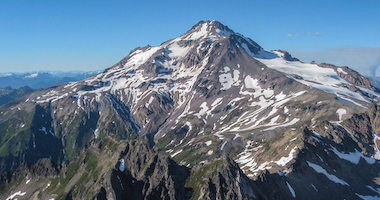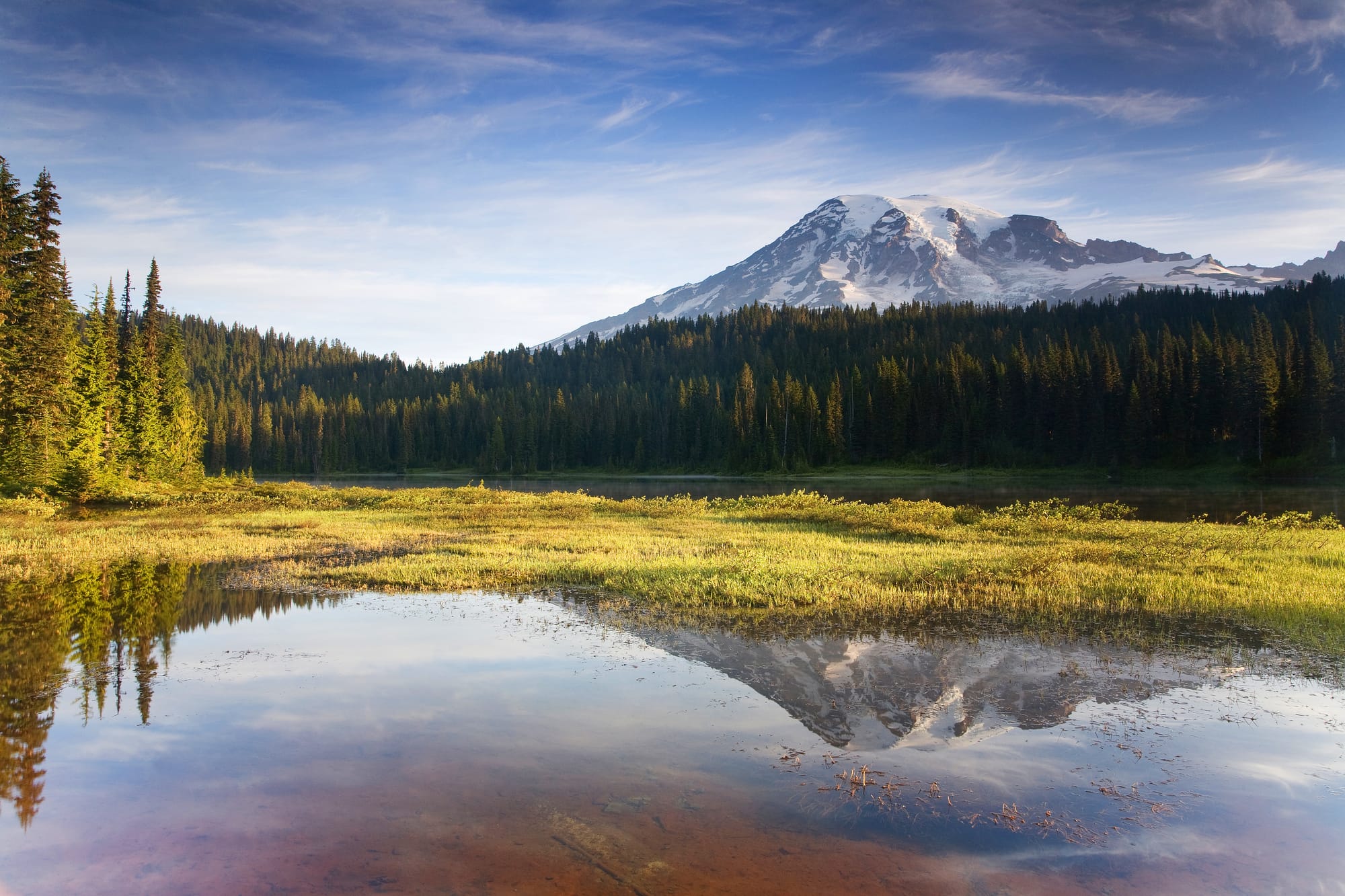If you’ve heard that climbing outside the peak season lowers your chances of reaching the summit, it’s time to rethink that assumption. While the conditions shift throughout the season, each period presents its own rewards—and with the right mindset and preparation, early and late-season climbs can be just as incredible as the height of summer.
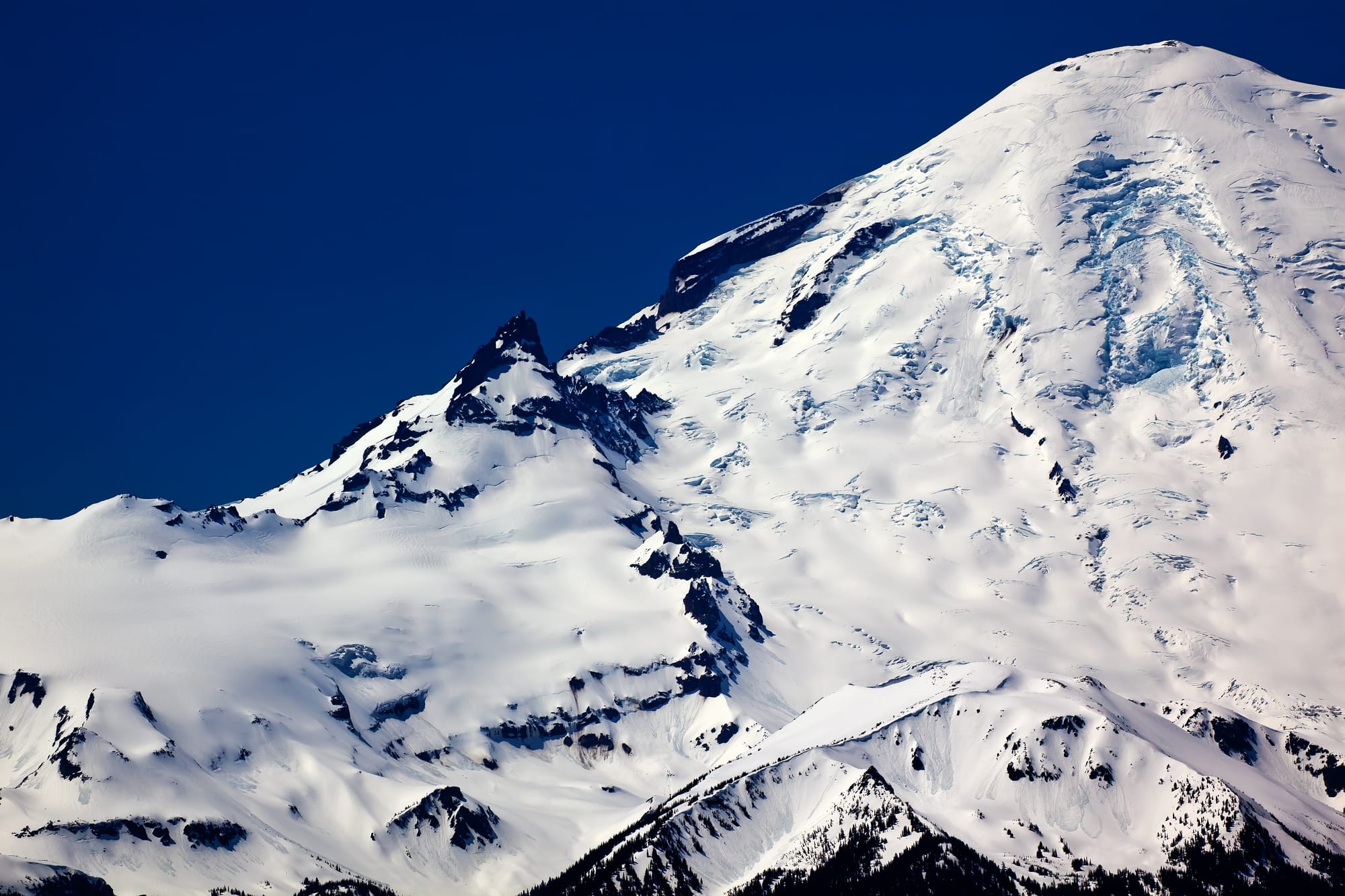
Early-Season Climbing: A Snow-Covered, More Direct Route
In the early season, Mount Rainier is still wrapped in its winter coat. The deep snowpack smooths over the crevasses, creating a more direct and efficient climbing route. This means:
✅ Fewer crevasses to navigate – Snow bridges are well-formed, and the Disappointment Cleaver route is often more straightforward.
✅ More consistent snow travel – Unlike later in the summer, when sections of the route become a mix of rock and ice, early-season climbs are entirely on snow, which can make footing more predictable.
✅ A quieter mountain – Fewer climbers mean a more personal, immersive experience in the alpine wilderness.
The trade-off? Spring storms. Rainier’s location means weather patterns rolling off the Pacific can bring high winds and snowfall. But when conditions align, early-season climbs offer a stunning, pristine mountain landscape with the bonus of shorter, more direct routes.
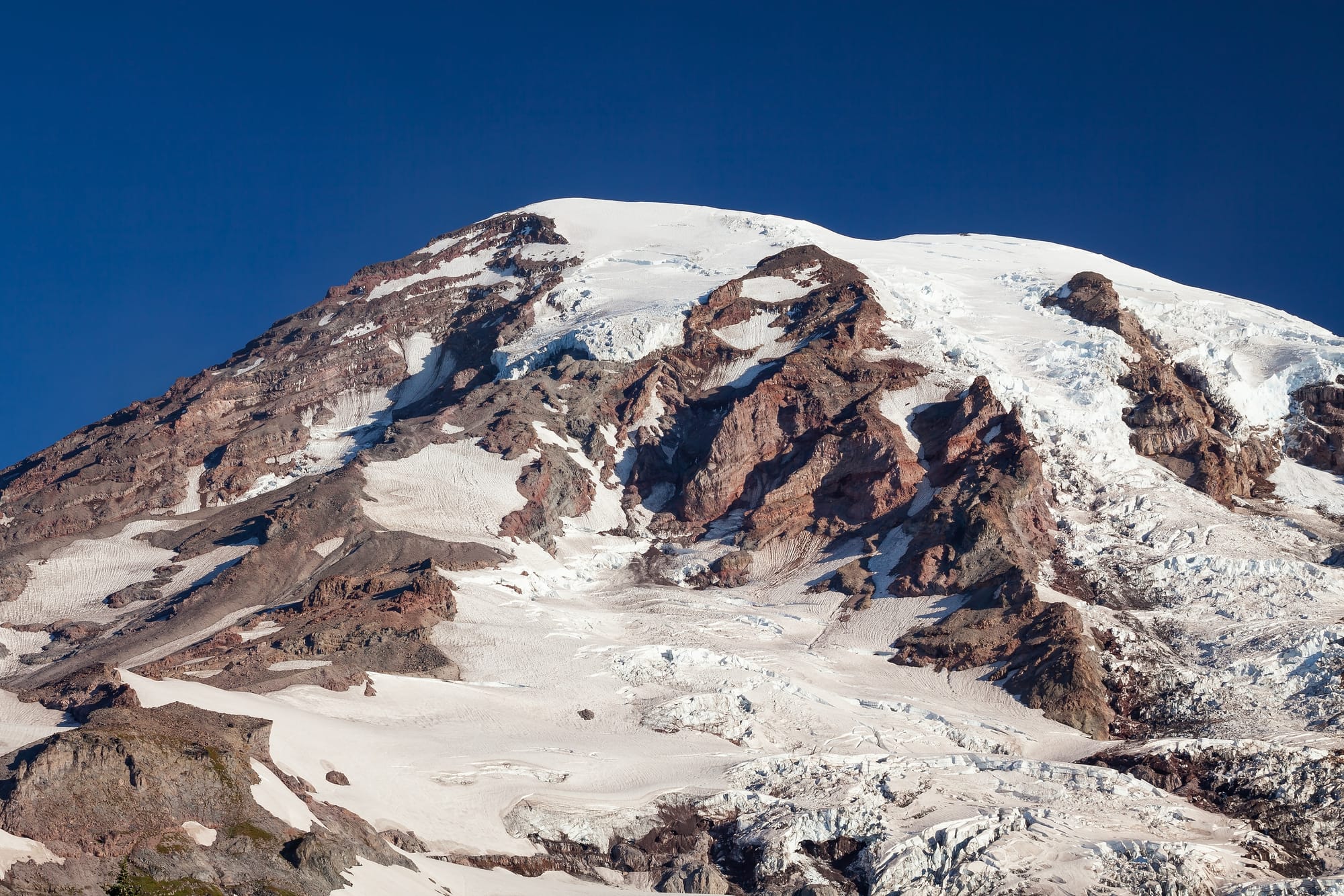
Peak-Season Climbing: Stable Weather and Established Routes
June and July are considered the heart of the climbing season for good reason. The snowpack consolidates, the weather stabilizes, and success rates peak. This is the time when:
✅ Routes are well-established – Thanks to guide services like RMI Expeditions, pathways around crevasses are well-maintained.
✅ Weather windows are often longer – Summer high-pressure systems bring extended periods of clear skies.
✅ Climbing conditions are at their most predictable – Routes are in their prime, though they may lengthen slightly as crevasses open.
While peak season offers great conditions, it also means more climbers on the mountain, and as summer progresses, the route becomes longer and more circuitous.
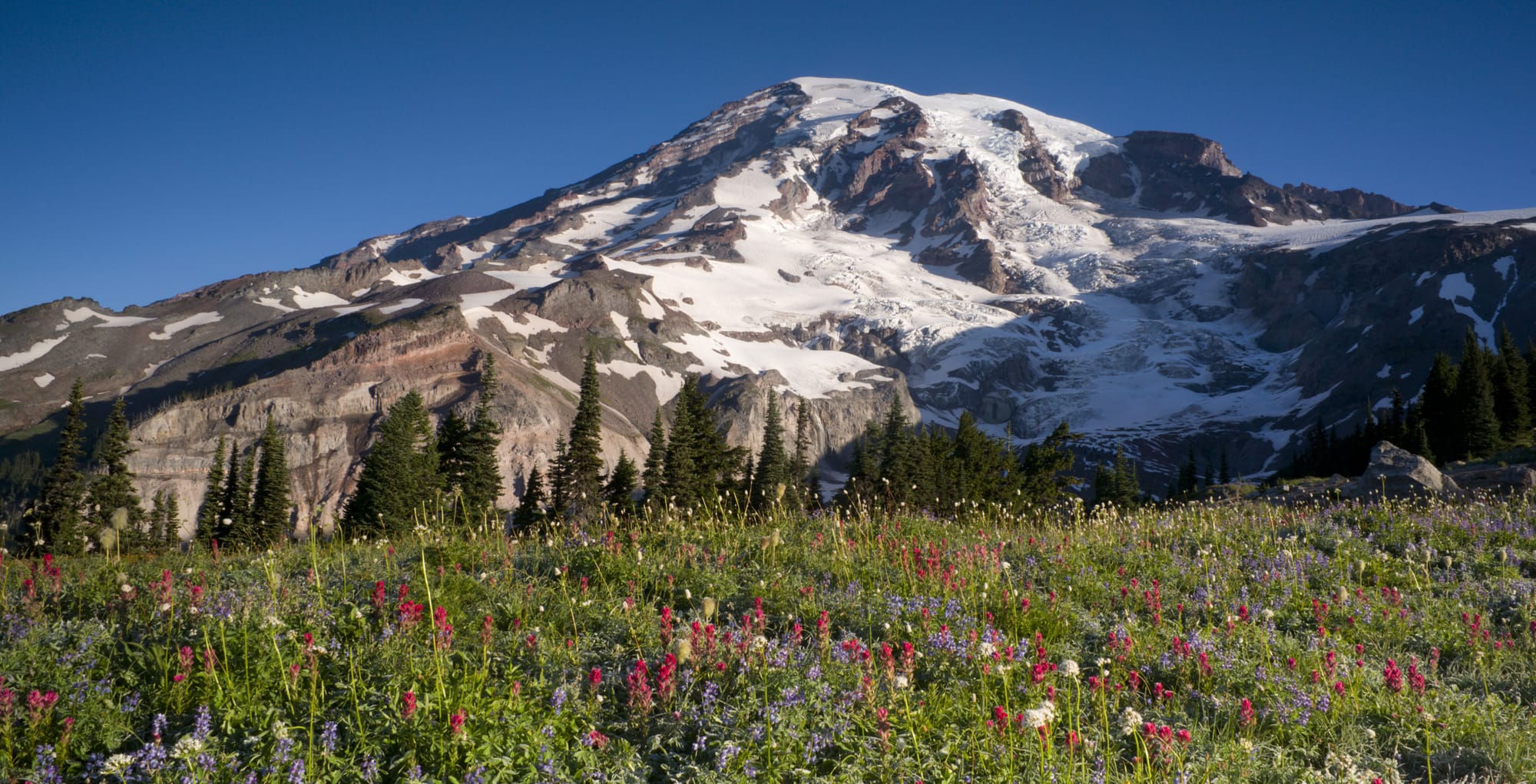
Late-Season Climbing: A Dynamic, Technical Experience
Rainier’s glaciers experience their most dramatic transformations as the season progresses into August and September. While some may assume late-season climbs are “harder,” the reality is they are simply different:
✅ A more technical challenge – Crevasses are wider, requiring additional route-finding, ladder crossings, and more complex movement.
✅ Stable morning conditions – Cooler overnight temps often mean firmer snow and easier travel in the early hours.
✅ A quieter summit – By late summer, fewer teams are on the mountain, creating a more serene summit experience.
Late-season climbs require stamina and adaptability as routes shift due to melting snow and evolving glacier conditions. While the approach may differ, successful ascents happen regularly in late summer, especially for climbers who are prepared for longer summit days.
Weather Dictates Everything - And It’s Always Unpredictable
While seasonal trends provide general guidance, no one can precisely predict the “best” time to climb Rainier each year. Weather patterns can shift dramatically from season to season, completely reshaping climbing conditions.
Take 2024, for example—early August saw a series of significant storms that dropped fresh snow on the upper mountain, covering crevasses and smoothing the route. Instead of deteriorating as expected, conditions improved, and excellent climbing continued through the end of the season. Conversely, other years have seen warm, dry conditions in mid-July that made the route more technical earlier than anticipated.
This variability means there is no “perfect” time to climb Rainier—only the time that works for your schedule and goals. Early- and late-season climbs often get overlooked due to assumptions about difficulty, but in reality, every season carries advantages and unknowns. What matters most is being prepared for a range of conditions and embracing the experience Rainier offers, no matter when you climb.
Climbing Rainier in Any Season: A Challenge Worth Taking
Every season on Rainier has its pros and cons, but climbing success is less about the date on the calendar and more about your preparation, adaptability, and conditions on the mountain that week. While mid-season climbs may seem like the “safest bet” for summit success, early and late-season ascents offer unique advantages that many climbers overlook.
If you’re ready for the challenge, now is the time to claim one of the remaining spots for this season. No matter when you climb, Mount Rainier will test your endurance, reward your effort, and leave you with an unforgettable experience.
There are still some spots left for the 2025 Rainier climbing season, sign up today at the link below!




